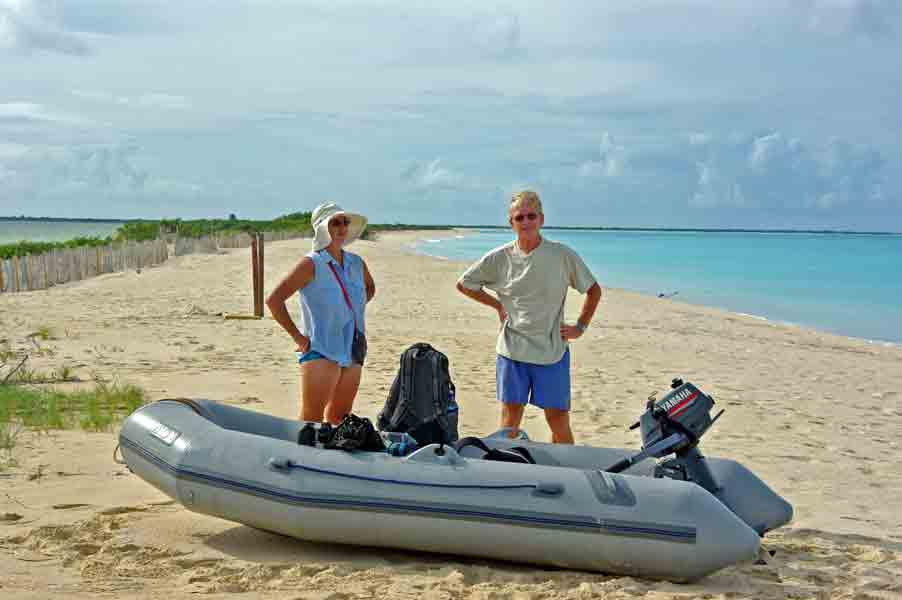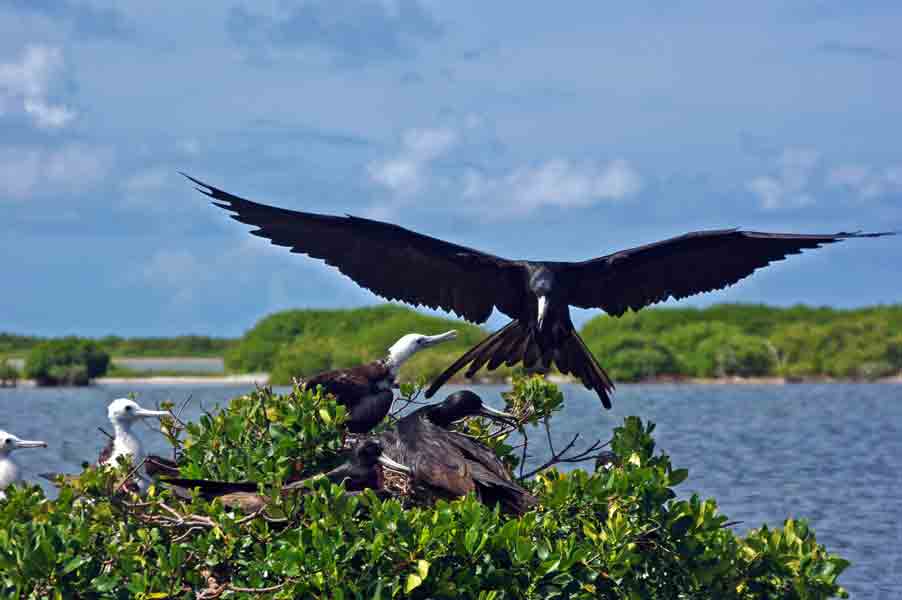Frigates, sand and solitude.

Oriole
Thu 5 Mar 2009 14:40
|
Low Bay, Barbuda. 17:38.938N
61:51.427W
After the big winds and seas of last week the
weather has settled down to the calmer balmy character of the Caribbean, sadly
not too common during the winter. On Saturday morning we were underway at
0600 in company with Nordlys heading for Barbuda, part of the country
of Antigua and Barbuda but 30 miles to the north of Antigua. Oriole
took an early lead, but only by means of taking a short-cut through the
reefs denied to the greater draught of Nordlys. Once clear of the
north end of Antigua Nordlys slowly caught us and was only a few
minutes behind when we were making our approach through the reefs to Low Bay,
Barbuda. It was an idyllic sail with 12-15 knots of wind just forward of the
beam and a calm sea in great contrast to our sail back from Nonsuch Bay earlier
in the week. The enormous easterly swell was then causing steep breaking seas on
the bank at the entrance to Nonsuch Bay over which we had to pass.
 Skipper and mate on 11 mile beach
Barbuda
Barbuda is low and flat, about 10 miles long by 5
miles wide with about 1600 inhabitants, descendants of the slaves kept here by
the Codrington family for a selective breeding programme. The name
Codrington has been expunged from any street or place names in Antigua but is
still the name of the capital and only town (its a small village really) of
Barbuda. The Lagoon is a natural breeding ground for lobsters which are exported
in large numbers, otherwise tourism is its only other source of income, slave
breeding being a thing of the past. Princess Diana used to come here for
quiet holidays and the hotels are aimed at the top end market.
 Frigitas magnificans. Two
males displaying with chick above
On Sunday we arranged a trip to the Frigate Bird
Sanctuary in the Lagoon which is one of the wonders of the Caribbean.
Thousands of these magnificent birds (Frigitas magnificans) nest in the
mangroves in the Lagoon and the males roam far and wide and return each year to
breed here.
  Photos courtesy David Ridout
Nordlys
There are smaller breeding colonies elsewhere
including the Galapagos. These birds never alight on the water but pick
their prey either straight out of the water while on the wing or steal other
birds catches or cause them to vomit their stomach contents which they deftly
catch before it hits the sea. An adult bird cannot take off from the sea,
and on occasion two adults have been seen to help a stranded bird to get into
the air from the water. Our guide, a lobster fisherman, gave us a
wonderful trip and we had the place to ourselves. Unescorted trips to the
Sanctuary are forbidden. Sadly and surprisingly, as we returned, he could not
find his lobster trap to sell us a couple of lobsters, but we are assured that
this will be remedied today.
|